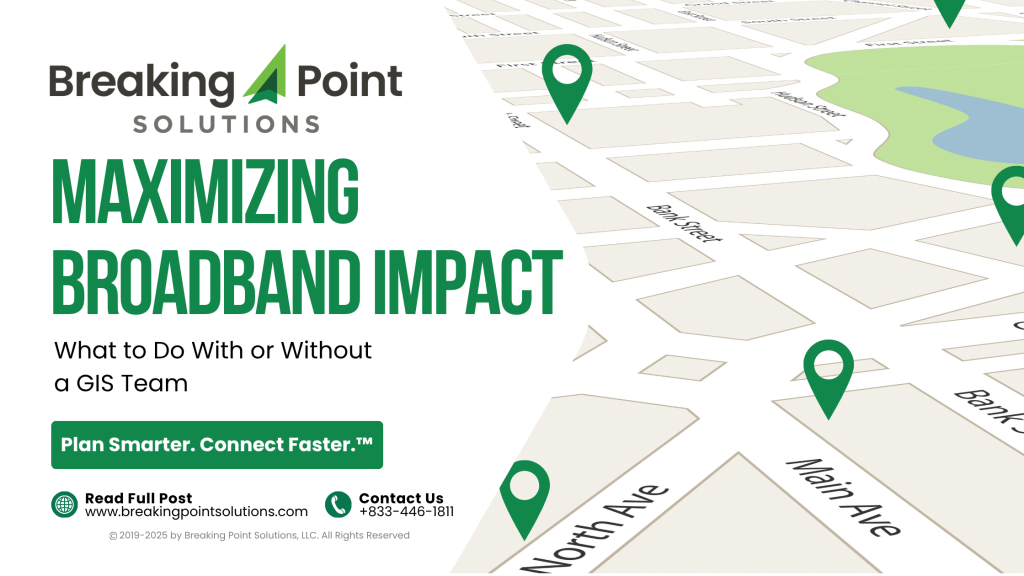
As broadband expansion is a national priority, the importance of Geographic Information Systems (GIS) in planning efforts continues to grow. Whether an organization has a dedicated GIS team or not, these tools provide a critical foundation for making informed, data-driven decisions. GIS supports everything from identifying underserved areas to tracking progress and impact. There are two key aspects of GIS that are essential to continued broadband planning:
1. When You Have a GIS Team
Organizations with GIS personnel are well-positioned to fully harness the power of geospatial tools. These professionals can develop custom maps, perform spatial analysis, and integrate multiple datasets to produce comprehensive broadband coverage models. They can identify unserved and underserved communities with precision, overlay demographic data, and help prioritize areas for investment. GIS staff can also monitor infrastructure deployment over time, allowing for adaptive planning that aligns with real-world progress. With the right team, GIS becomes a dynamic engine for strategic decision-making.
2. When You Do Not Have a GIS Team
Even without internal GIS experts, organizations can still benefit from accessible GIS platforms and tools. Many state and federal programs now offer publicly available broadband maps and data layers that can be explored through user-friendly dashboards. Commercial and nonprofit GIS platforms also provide templates and simplified interfaces that allow non-technical users to generate meaningful insights. These tools help local governments, internet service providers, and community organizations identify service gaps, apply for funding, and validate coverage claims. In essence, GIS empowers stakeholders to act even without in-house expertise.
Conclusion
GIS is not just a technical asset but a strategic necessity in continued broadband planning. Whether you have a skilled GIS team or are relying on external tools and resources, the ability to visualize and analyze broadband data in a geographic context is critical to building a connected future.
